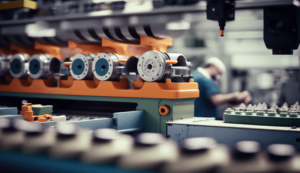Isi kandungan
TogolComponents of Lifts
When it comes to lifts, choosing the right components is crucial for ensuring maximum efficiency and reliability. With a wide range of options available in the market, customers often find themselves overwhelmed and unsure about which components to select. In this article, we will guide you through the process of selecting the perfect components for your lifts, highlighting the advantages and application fields that you should pay attention to.
To begin with, let’s focus on one of the most important components of a lift – the motor. The efficiency of a lift largely depends on the motor as it is responsible for powering the system. When choosing a motor, customers need to consider factors such as power consumption, performance, and reliability. For instance, a brushless DC motor is widely considered to be an ideal choice for lifts due to its high efficiency and low maintenance requirements. By opting for a motor that is specifically designed for lift applications, customers can ensure smooth operation and reduced energy consumption.
Moving on to another critical component – the control system. The control system plays a crucial role in managing the overall performance and safety of the lift. Choosing a control system that offers advanced features like intelligent dispatching, emergency braking, and fault diagnosis can significantly enhance the efficiency of the lift. For example, imagine a scenario where the control system intelligently optimizes the operation of multiple lifts in a building, resulting in reduced waiting times for passengers and increased overall efficiency. Such advanced control systems not only improve the user experience but also provide valuable insights for lift maintenance and troubleshooting.
Next, let’s delve into the importance of selecting the right materials for lift components. Lifts operate in various environments, including high-rise buildings, shopping malls, and airports, each with its own set of demands. Customers need to carefully consider factors such as durability, corrosion resistance, and fire safety when choosing materials for components. For instance, opting for stainless steel for lift doors and cabins not only ensures durability but also adds an aesthetic appeal to the overall design. Similarly, using fire-resistant materials for critical components like wiring and control panels can greatly enhance the safety standards of the lift.
Additionally, customers should pay attention to the components that contribute to energy efficiency. Lifts consume a significant amount of energy, and selecting components that minimize energy wastage can have a substantial impact on efficiency. For instance, opting for LED lighting instead of traditional fluorescent lights reduces power consumption and maintenance costs. Additionally, the use of regenerative drives can capture and convert energy produced during braking into usable power, resulting in energy savings and reduced environmental impact.
In conclusion, choosing the right components for lifts is essential for achieving maximum efficiency and reliability. By carefully considering factors like motor efficiency, advanced control systems, suitable materials, and energy-saving components, customers can optimize the performance of their lifts. Remember, an efficient lift system not only enhances the overall user experience but also minimizes operational costs and contributes to a sustainable future. So, make informed decisions when selecting lift components, and watch your lifts operate at their best.


